Digital transformation. Yup, I said it. It's over-hyped.
But as SAS Chief Operating Officer and Chief Technology Officer Oliver Schabenberger says, "It's also real and powerful. Our world is being liquefied from physical assets into virtual assets, and analog processes into digital processes - the world is turning into bits and bytes of data." This is especially true in our customer-obsessed world.
As this trends evolves, the role of analytics is not changing. Simply put, analytics derives insight from data. "What is changing in light of digital transformation," said Schabenberger in a recent presentation, "Is the importance of data and analytics. It now has an expanded and strategic role. It is a requirement."
Schabenberger goes on to explain that many brands are finding themselves in unfamiliar territory. Generally speaking, analytical software feels like it's becoming commoditized. The technology landscape has shifted to cloud companies with seemingly unlimited resources and appetite. The building blocks of technology are changing quickly. Innovation cycles are now measured in weeks and months, not years.
Brands operating in unfamiliar territory can benefit from having "an internal compass," says Schabenberger, "A built in GPS, if you will. As an analytics technology company, SAS has this. It's called: The principles of analytics."
The principles of analytics
Schabenberger explains how these principles inform our approach to data and analytics -- and I'll be expanding how they apply to marketing technology. They manifest in our Customer Intelligence 360 software offerings -- you can see these principles in everything we do. Let's walk through the four principles:
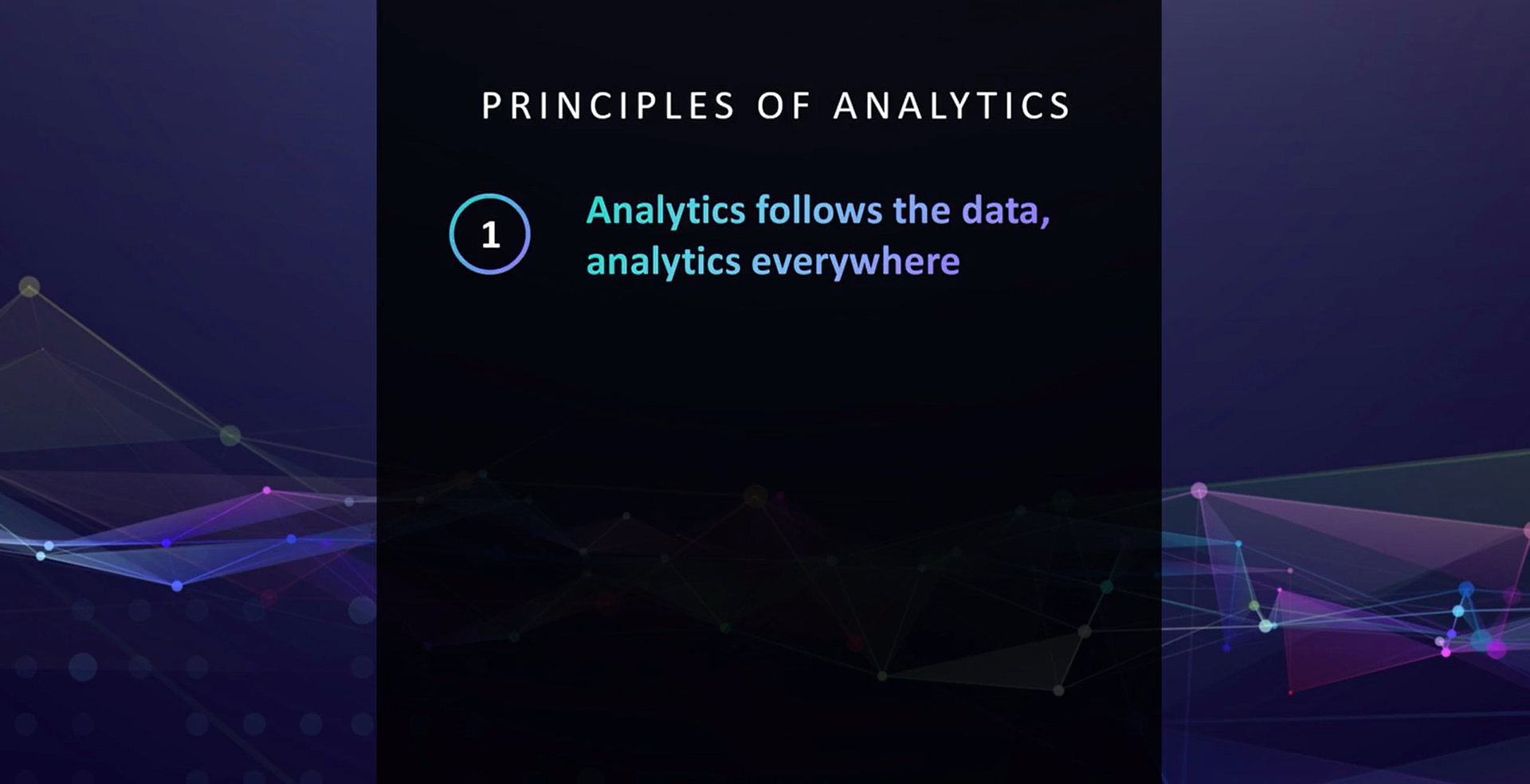
Data without analytics is value not yet realized. Today, more diverse consumer data is generated and available to all of us. "The first principle is about bringing the right analytical technology to the right place at the right time, whether it is on-premises, public or private cloud, says Schabenberger. Thus, this principle manifests itself in pushing both autonomous and customized analytical assets aggressively into our capabilities that support micro-moments of opportunity during a customer journey. Integrating analytics with cloud storage and computing, while architecting our hybrid software solutions to support cloud-native and on-premise environments, along with an increased emphasis on data quality, privacy and security.
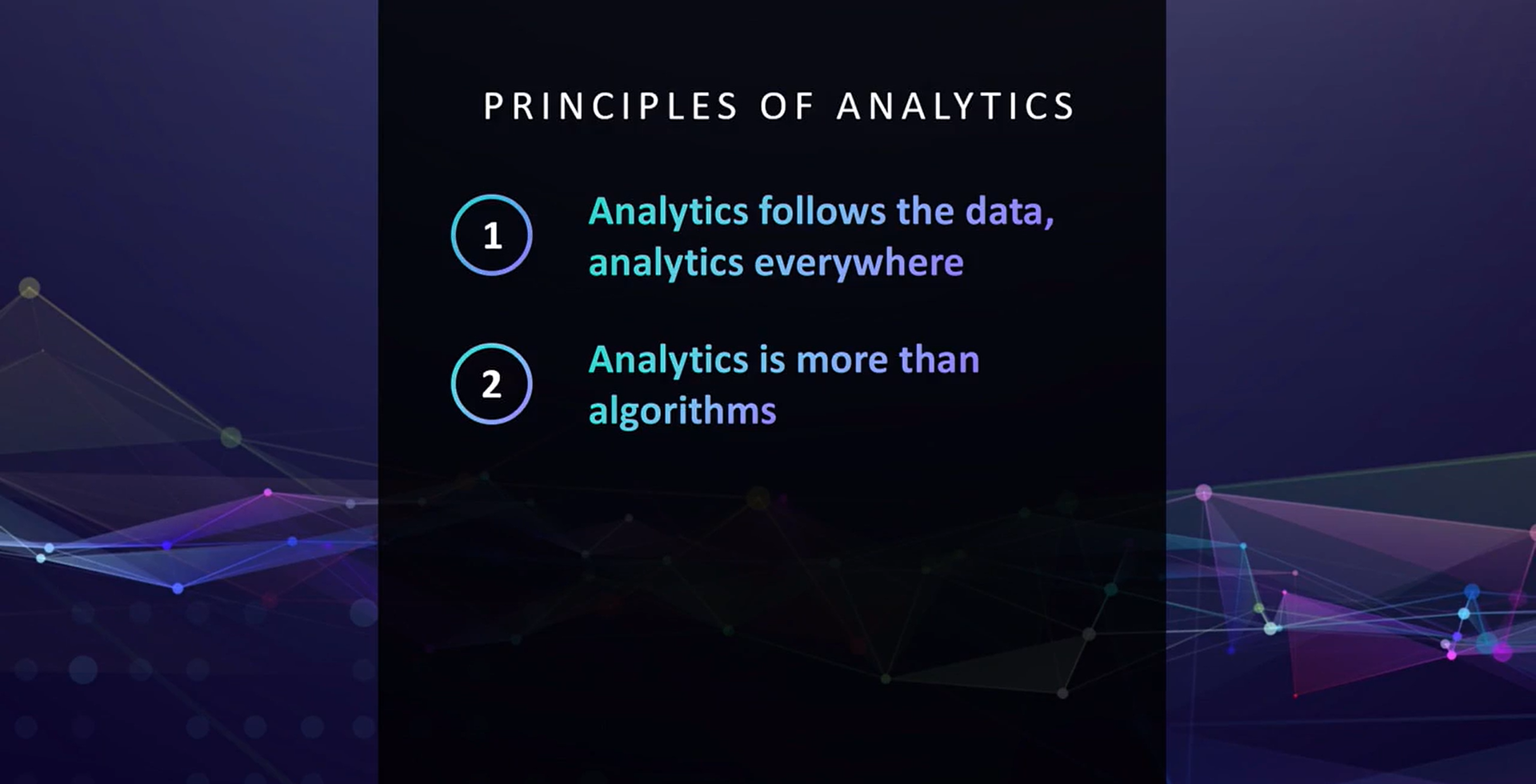
We have always paid attention to the quality, robustness and performance of algorithms. It's no surprise that we love math. "But the value of analytics is not in the features and functions of the algorithms," says Schabenberger. Not anymore. The value for the marketing team is in solving data-driven business problems.
"Everybody has algorithms in 2020. But operationalizing analytics is not a commodity," says Schabenberger. "Everybody has challenges in bringing analytics to life. Data science teams are no longer measured by the number of models or algorithms they build but by the business value they generate." He goes on to explain that analytics needs to be enterprise-grade, meaning that it's:
- Scalable.
- Flexible.
- Operational.
- Governed.
The integration of the end-to-end analytical life cycle with no-code, low-code and high-code interfaces supporting both SAS and open source languages addresses different roles with unique needs.
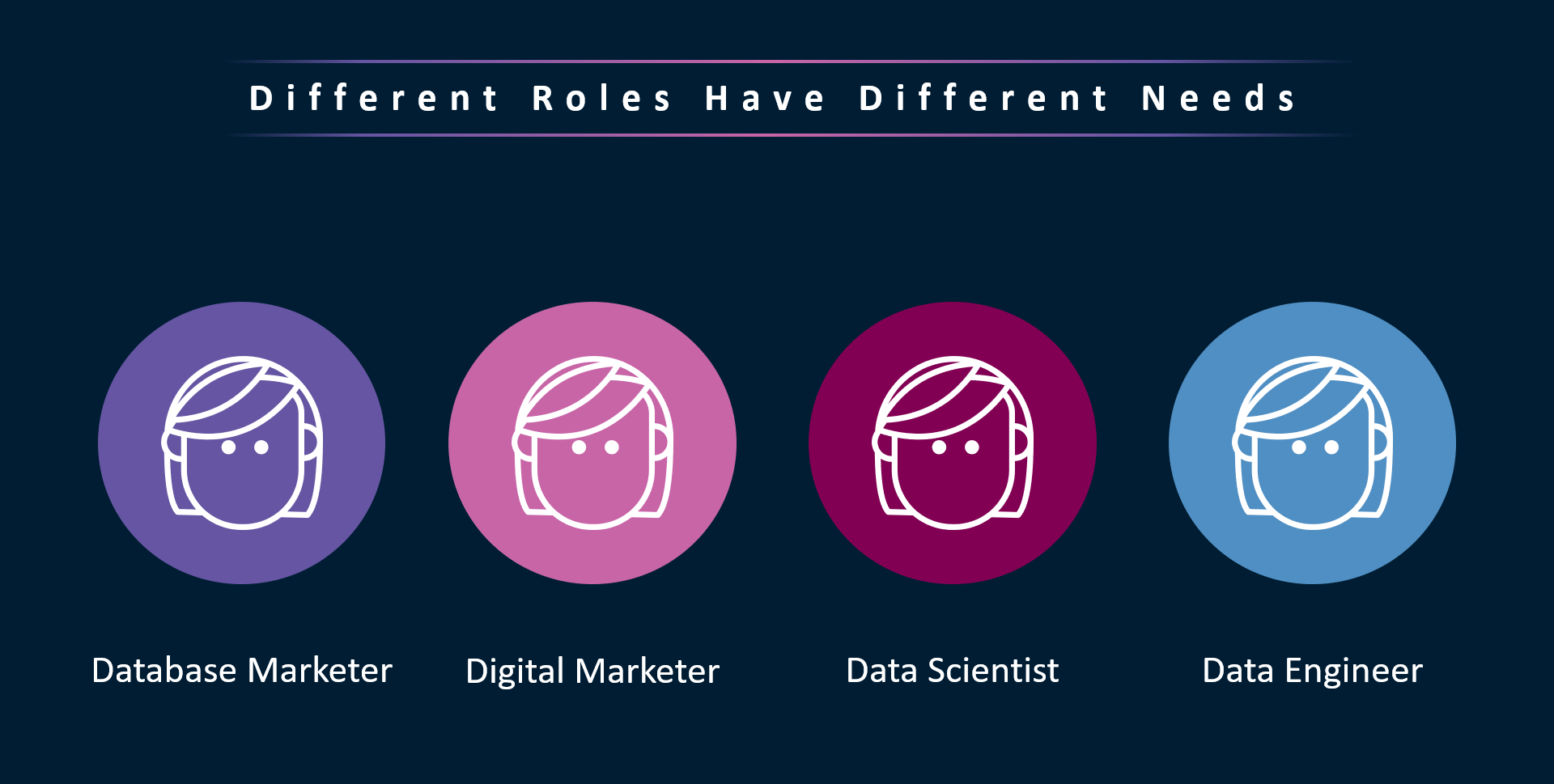
How does this second principle manifest itself within Customer Intelligence 360? Here are two topics with applied use cases to dive into:
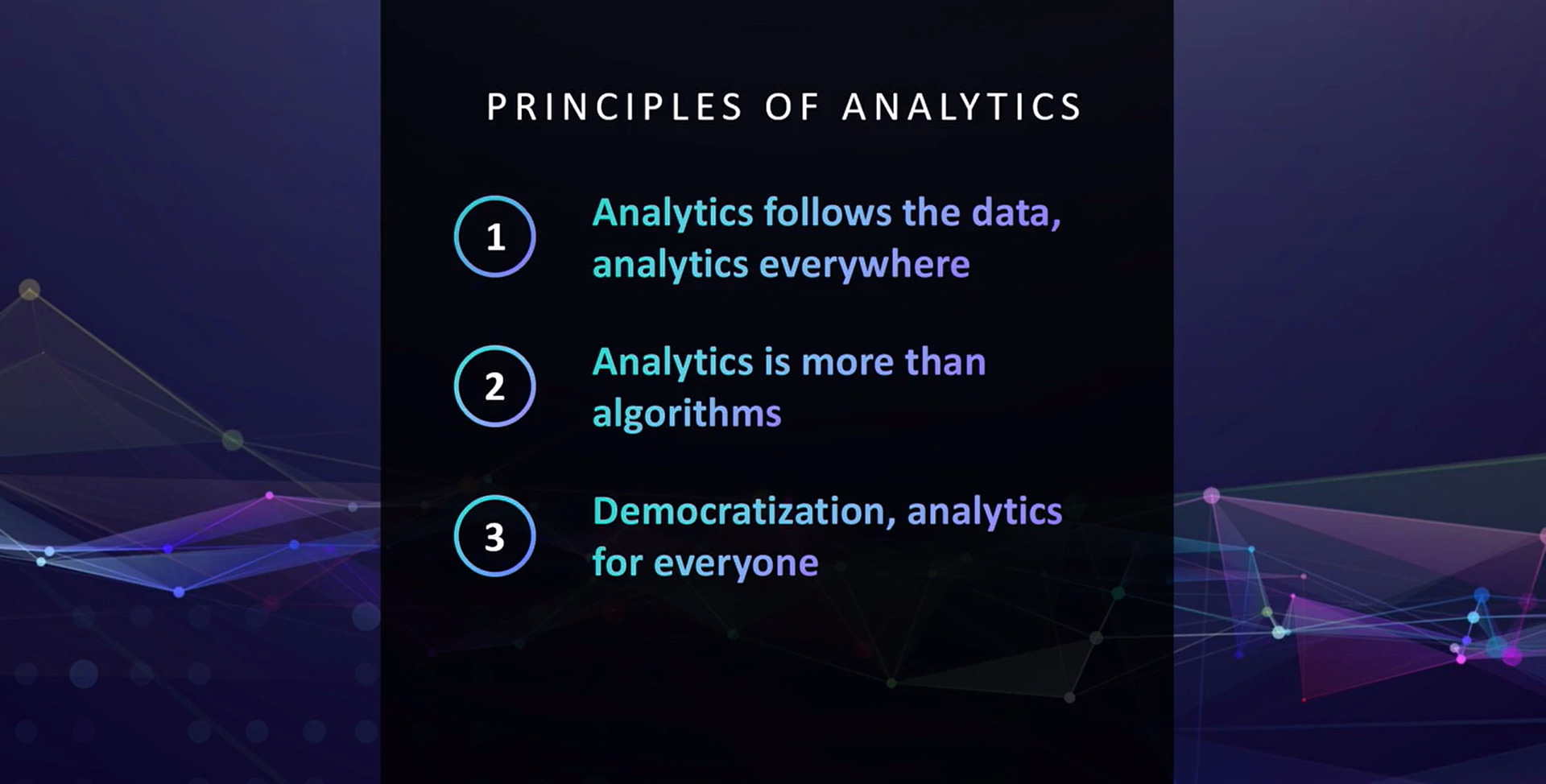
If data analytics is to play a strategic role in digital transformation, analysis must scale beyond data science teams, explains Schabenberger. Lower tiers of the analytic skill pyramid need to be enabled because they in turn have more domain knowledge. The democratization of analytics is an element of the larger trend within the democratization of technology.
This principle unfolds itself within SAS through technology for visualization, augmented analytics, automation of data management and machine learning, and autonomous AI supporting the marketer's daily tasks and processes. Examples of Customer Intelligence 360 applications inspired by this premise include:
If you're tired of reading, you can check out this demo highlighting use cases of this principle coming to life:
Let's transition to the final principle.

At SAS, we see everything through the perspective of data and analytics. Within Customer Intelligence 360, it all boils down to the following areas of customer engagement:
- Listening
- Understanding
- Measuring
- Planning
- Deciding
- Acting
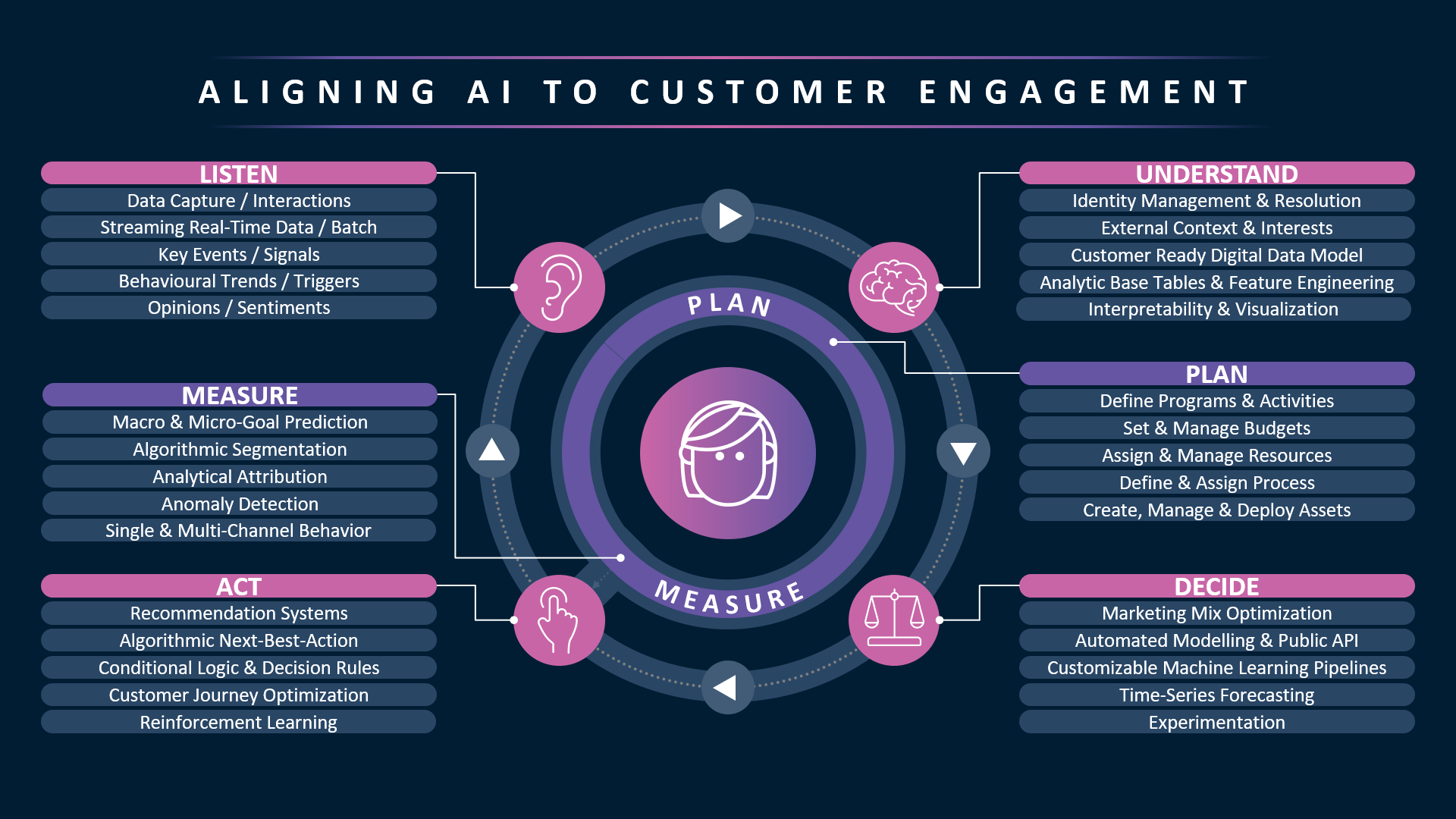
We're in the customer intelligence space to improve marketing through analytics and optimization, not to run email campaigns. However, we run email campaigns improved and informed by analytics and optimization.
Lastly, "we cannot rest on our laurels and assume analytics is a differentiator," says Schabenberger. "Access to analytics is no longer unique, but getting value from analytics is." An analytical platform is not a difference-maker, but analytical solutions for improving customer personalization and targeting is.
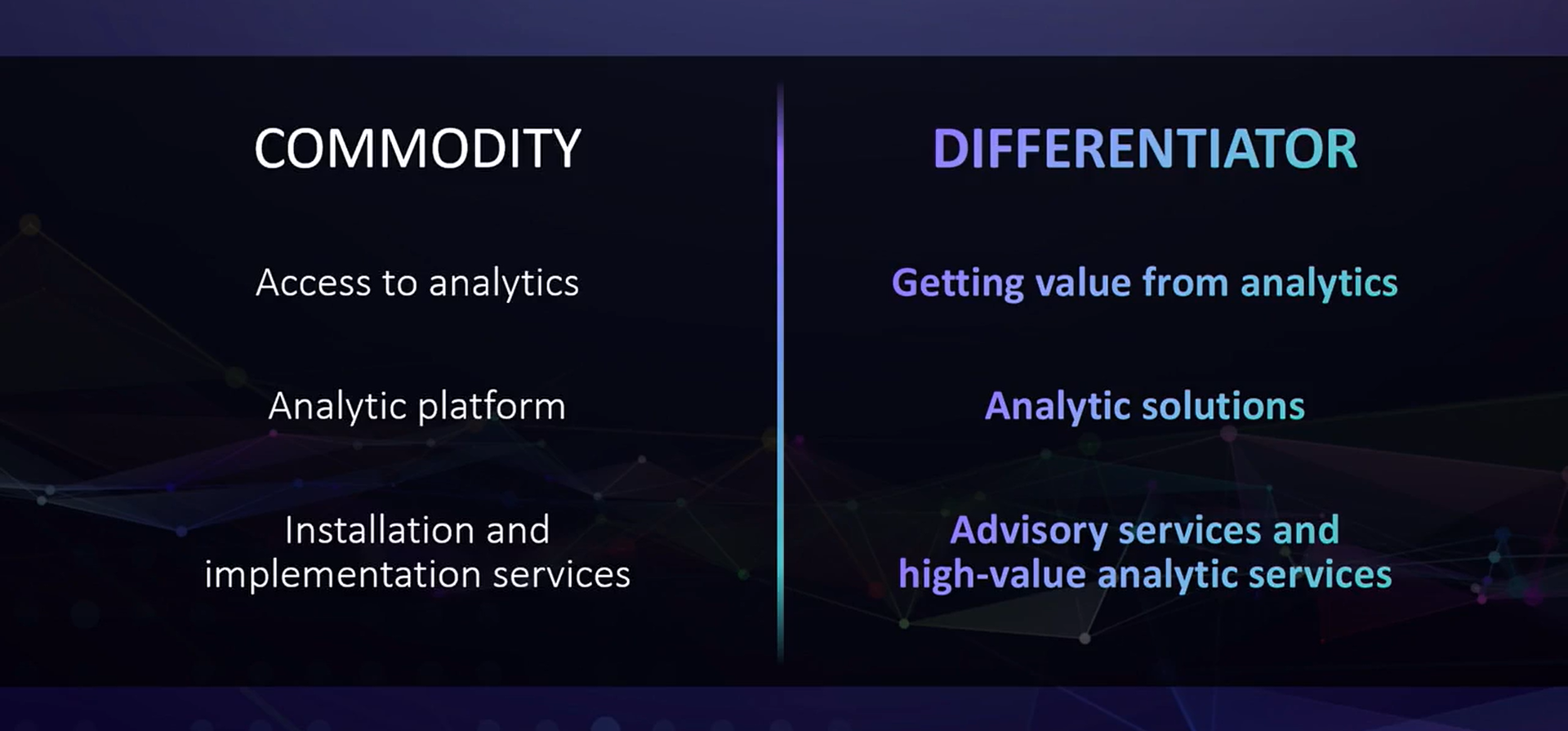
Conclusion
Allow me to close with a summary of the design principles for SAS Customer Intelligence 360, where the technology is intended to resemble the anatomy of the human brain. There are two distinct hemispheres.
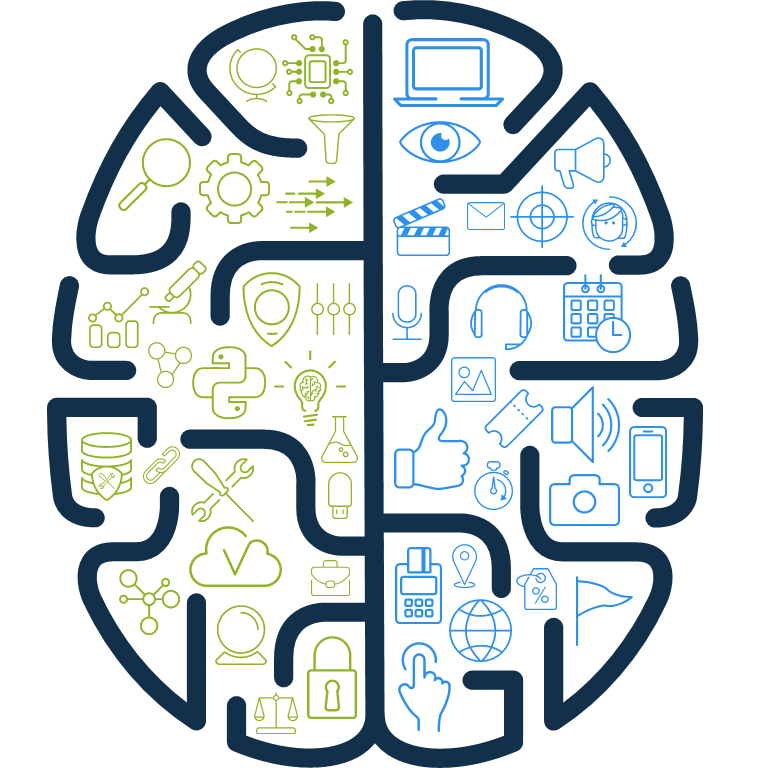
The left hemisphere is associated with analytical, logical, and fact-oriented thinking. The right side is associated with creative, intuitive, and visual thinking. This translates to the following factors:
- The strength of the left side links tightly with the authoring and deploying of predictive and machine learning models.
- The right side facilitates the orchestration layer of marketing activity across planning, creative and operational functions.
Together the intent is to better understand and manage customer activity, regardless of channel, in alignment with a brand’s goals and objectives. At the end of the day, both the analytical-minded and the creative-minded need to be in lockstep with one another. This is how the whole-brain approach of SAS Customer Intelligence 360 works.
To learn more about how the SAS platform can be applied to other marketing and customer-centric use cases, please check out additional posts here.
